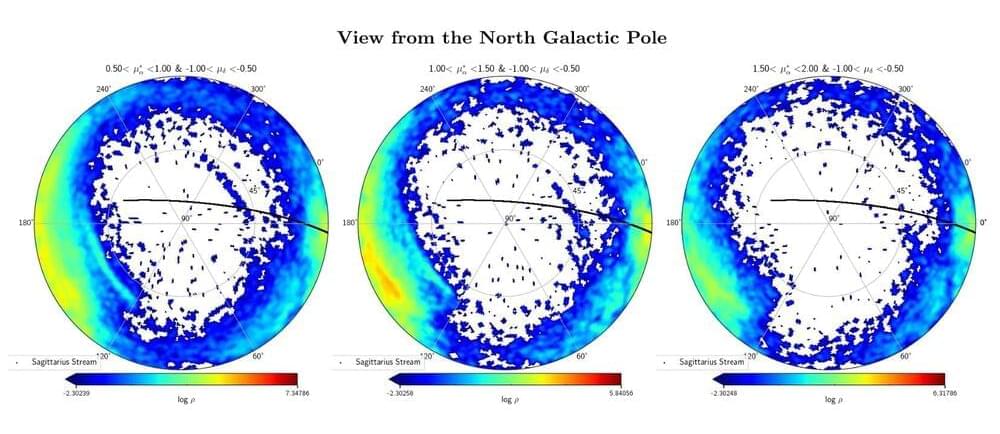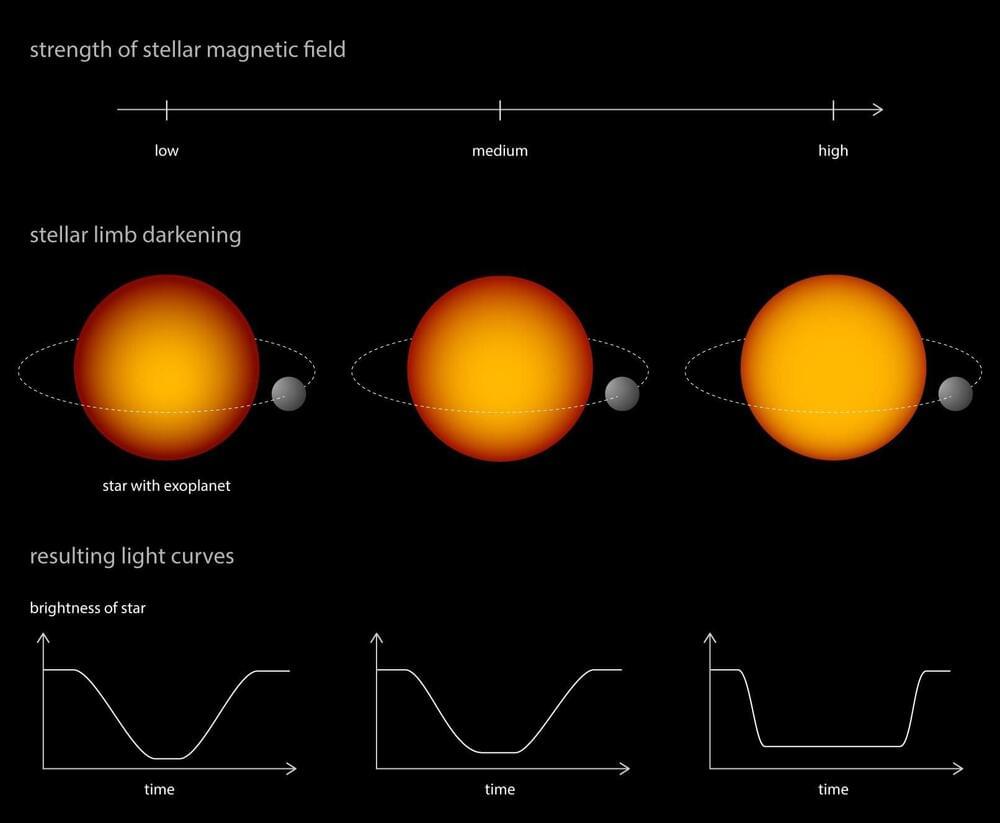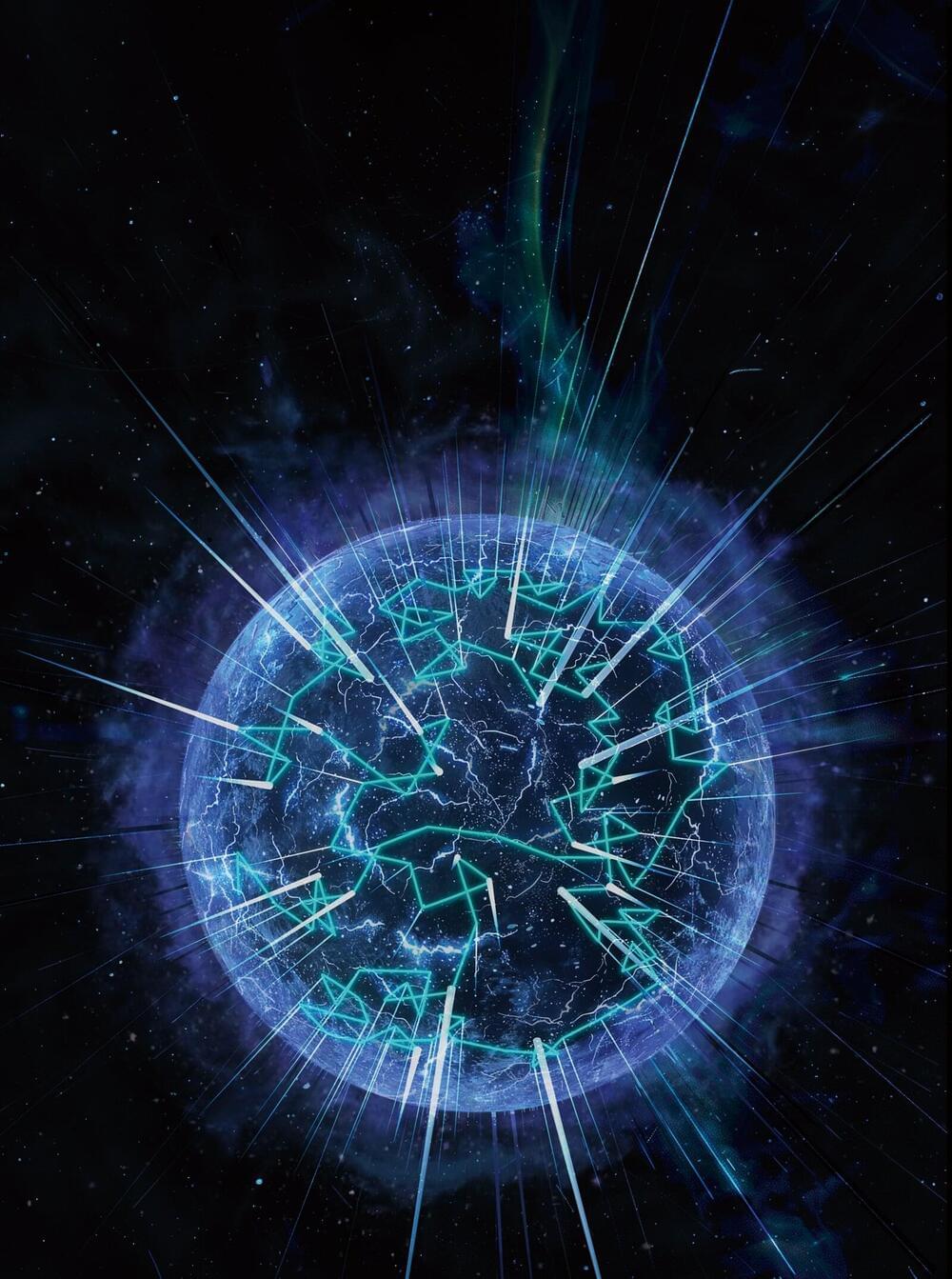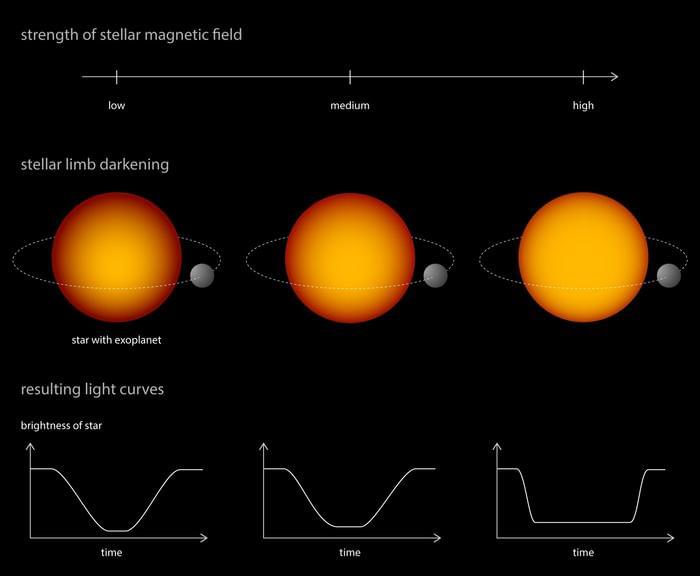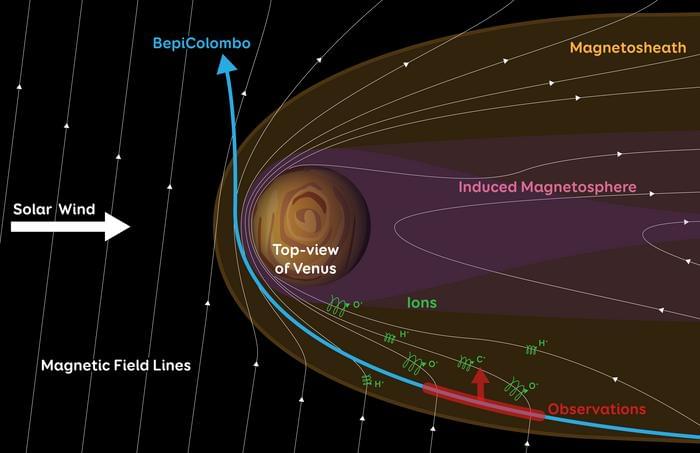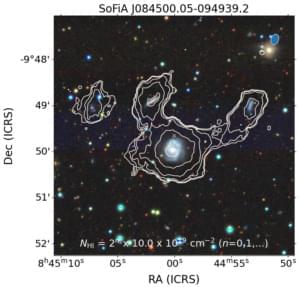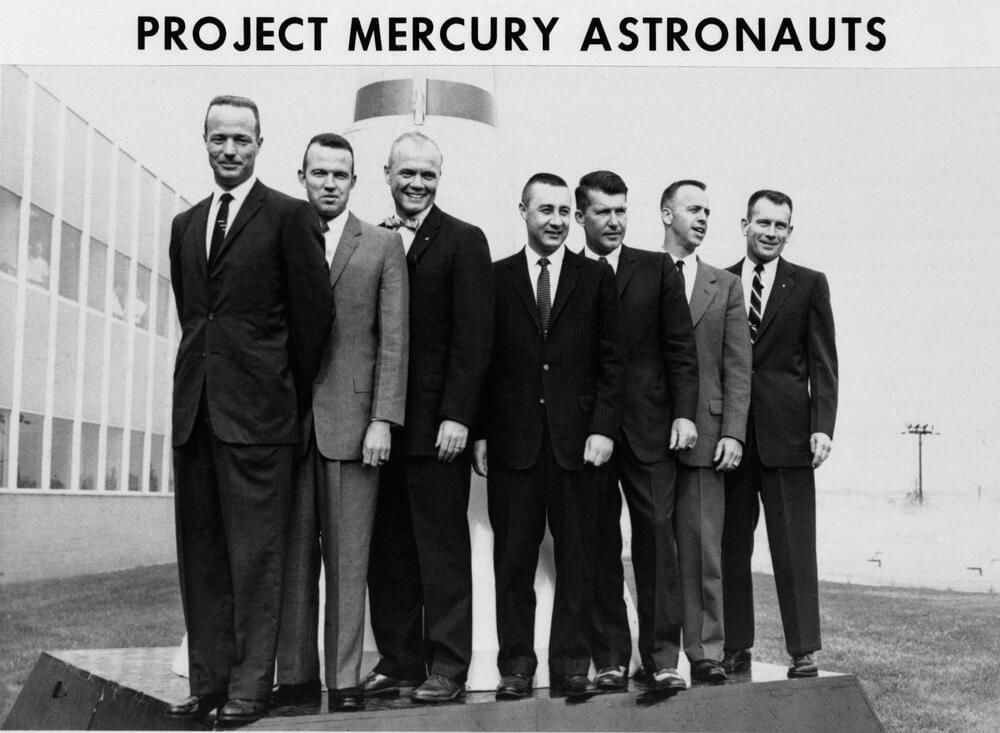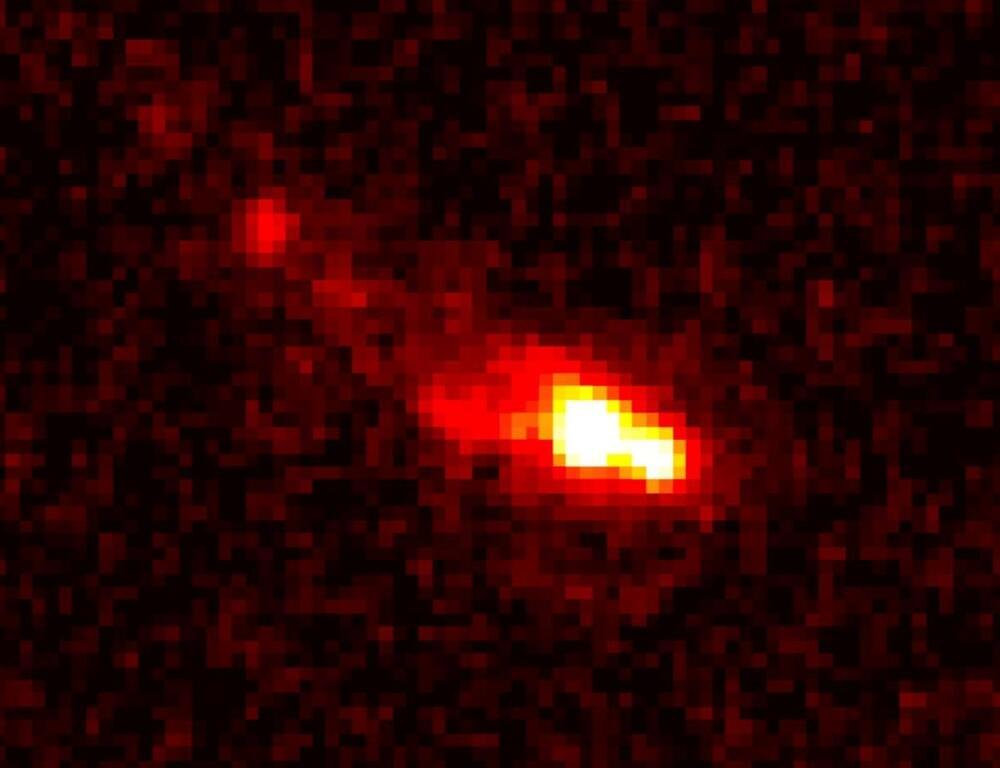Archive for the ‘space’ category: Page 99
Apr 13, 2024
New tidal stellar stream discovered with Gaia
Posted by Saúl Morales Rodriguéz in categories: energy, space
By analyzing the data from ESA’s Gaia satellite, Chinese astronomers have detected a new tidal stellar stream in the northern hemisphere, which has a low metallicity and a relatively high energy. The finding was reported in a research paper published April 1 in The Astrophysical Journal.
Apr 13, 2024
Exoplanets true to size: New model calculations shows impact of star’s brightness and magnetic activity
Posted by Saúl Morales Rodriguéz in category: space
In the constellation Virgo, 700 light years away from Earth, the planet WASP-39b orbits the star WASP-39. The gas giant, which takes little more than four days to complete one orbit, is one of the best-studied exoplanets. Shortly after its commissioning in July 2022, NASA’s James Webb Space Telescope turned its high-precision gaze on the distant planet.
Apr 13, 2024
Fast radio bursts: Research introduces a novel approach to characterize their behavior
Posted by Saúl Morales Rodriguéz in categories: physics, space
Fast radio bursts (FRBs) represent the most intense radio explosions in the universe. Since the first discovery in 2007, FRBs have garnered significant attention, culminating in the 2023 Shaw Prize in Astronomy. With yet unknown origin, these extreme cosmic bursts are among the most enigmatic phenomena in astronomy as well as physics.
Apr 12, 2024
A New Approach to Analyze Exoplanetary Light Curves
Posted by Laurence Tognetti, Labroots Inc. in categories: futurism, space
“The problems arising when interpreting the data from WASP-39b are well known from many other exoplanets — regardless whether they are observed with Kepler, TESS, James Webb, or the future PLATO spacecraft,” said Dr. Nadiia Kostogryz.
While there is currently a myriad of techniques used to both discover exoplanets and calculate their physical characteristics, could other methods be developed to overcome specific data errors? This is what a recent study published in Nature Astronomy hopes to address as an international team of researchers investigated how a star’s magnetic field can be used to ascertain additional data for an exoplanet, which is traditionally done using conventional exoplanet detection methods, specifically the transit detection method. This study holds the potential to help astronomers establish new methods for discovering and characterizing exoplanets throughout the cosmos.
For the transit method, an exoplanet passes in front of its parent star, causing its starlight to slightly decrease and has been instrumental in discovering and characterizing thousands of exoplanets. However, astronomers have also discovered that a star’s limb darkening, which is the observed edge of the star, causes errors in transit light curves for exoplanets, despite using state-of-the-art atmospheric models to predict observations.
Continue reading “A New Approach to Analyze Exoplanetary Light Curves” »
Apr 12, 2024
BepiColombo Mission Offers New Insights into Venus’s Atmospheric Loss
Posted by Laurence Tognetti, Labroots Inc. in categories: evolution, particle physics, space
How much of Venus’s atmosphere is being stripped by the Sun, and what can this tell us about how the planet lost its water long ago? This is what a recent study published in Nature Astronomy hopes to address as a team of international researchers examined data obtained from a 2021 Venus flyby by the BepiColombo spacecraft, which is a joint mission between the European Space Agency (ESA) and Japan Aerospace and Exploration Agency (JAXA) currently en route to Mercury. This study holds the potential to help researchers better understand the formation and evolution of planetary atmospheres, both within our solar system and beyond.
“Characterizing the loss of heavy ions and understanding the escape mechanisms at Venus is crucial to understand how the planet’s atmosphere has evolved and how it has lost all its water,” said Dr. Dominique Delcourt, who is a CNRS researcher at the Plasma Physics Laboratory (LPP) and the Principal Investigator of the Mass Spectrum Analyzer (MSA) instrument onboard BepiColombo, and a co-author on the study.
During its journey to Mercury, BepiColombo needs to conduct several gravity assists to slow down enough to enter Mercury’s orbit, with one such gravity assist occurring at Venus on August 10, 2021. During this flyby, BepiColombo passed through Venus’s magnetosheath, which is Venus’s version of a weak magnetic field that is produced by charged particles from the Sun interacting with Venus’s upper atmosphere. Over the course of 90 minutes, BepiColombo and its powerful instruments successfully measured data on how much atmospheric loss Venus is currently experiencing, which could help researchers better understand the formation and evolution of Venus’s atmosphere, and specifically how the planet lost its water long ago.
Apr 12, 2024
Astronomers Discover 49 New Galaxies in Under Three Hours
Posted by Natalie Chan in category: space
A team of international astronomers have discovered 49 new gas-rich galaxies using the MeerKAT radio telescope in South Africa from observations that were not even three hours long and were made possible by IDIA (Inter-University Institute of Data Intensive Astronomy).
Apr 11, 2024
International Space Station views the eclipse
Posted by Genevieve Klien in category: space
The International Space Station shares an out-of-this-world view of the celestial event. ABC News’ Gio Benitez reports.
Apr 11, 2024
From NASA’s First Astronaut Class to Artemis II: The Importance of Military Jet Pilot Experience
Posted by Genevieve Klien in categories: military, space
On April 9, 1959, reporters and news media crammed into the ballroom of the Dolley Madison House in Washington—the location of NASA Headquarters at that time—to learn the names of the first American astronauts who came to be known as the Mercury 7. Public Information Director Walter Bonney kicked off the announcement by pointing to the seven men sitting on stage. “These are our astronaut volunteers,” he announced. “Take your pictures as you will, gentlemen.” One of those men on the dais, Deke Slayton, a test pilot from Edwards Air Force Base, recalled the pandemonium he witnessed. “I’ve never seen anything like it, before or since.” He described the event as, “a frenzy of light bulbs and questions…it was some kind of roar.” His colleague, Wally Schirra, a test pilot from Naval Air Station Patuxent River, called the media’s interest scary because he soon came to realize that their, “private lives were in jeopardy.”
Apr 11, 2024
Galactic Genesis Unveiled: JWST Witnesses the Dawn of Starlight
Posted by Genevieve Klien in category: space
Groundbreaking observations by the James Webb Space Telescope of an early galaxy merger indicate faster and more efficient star formation than previously understood, revealing complex stellar populations and challenging current cosmological theories. Galaxies and stars developed faster after t.

